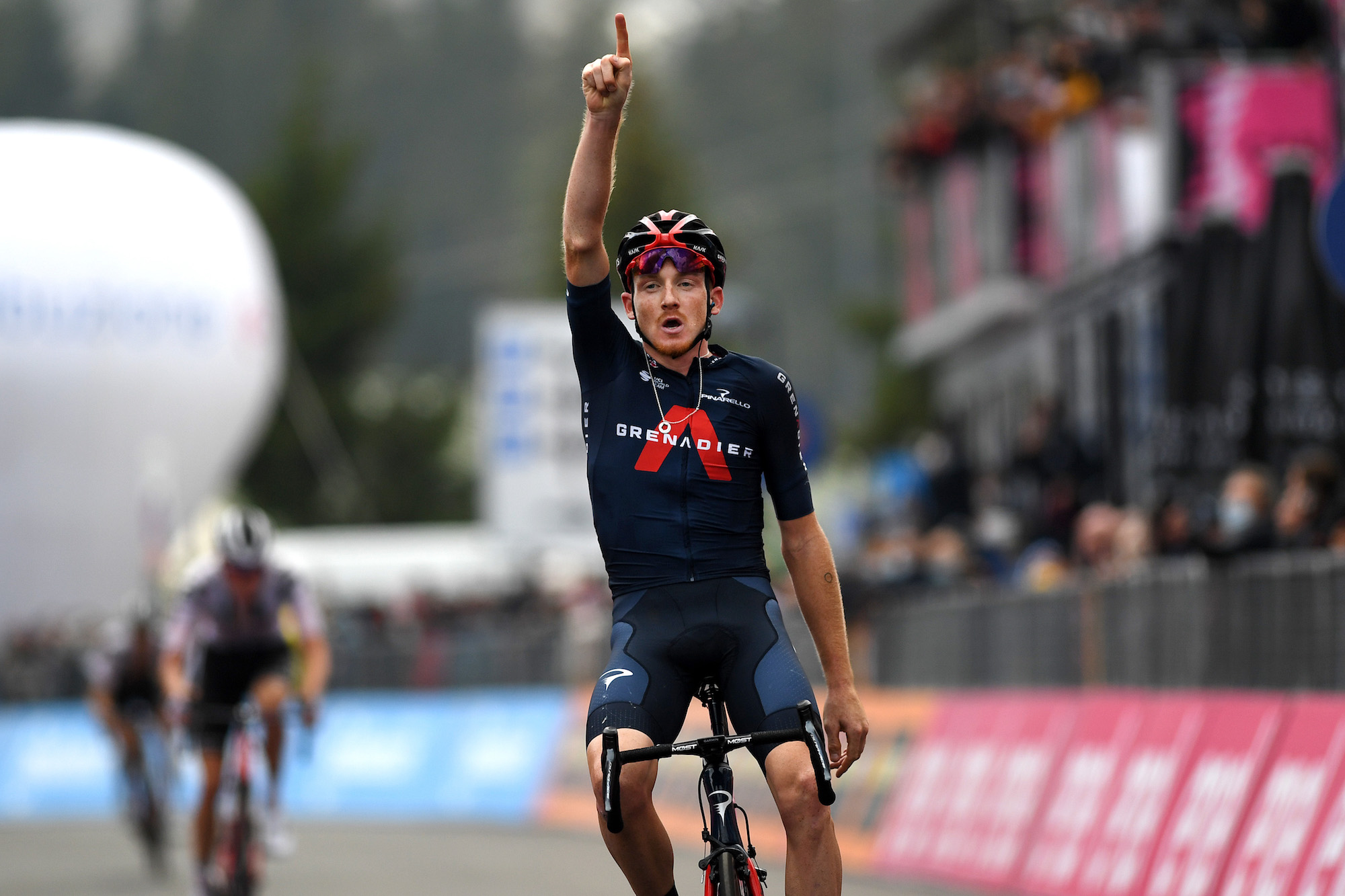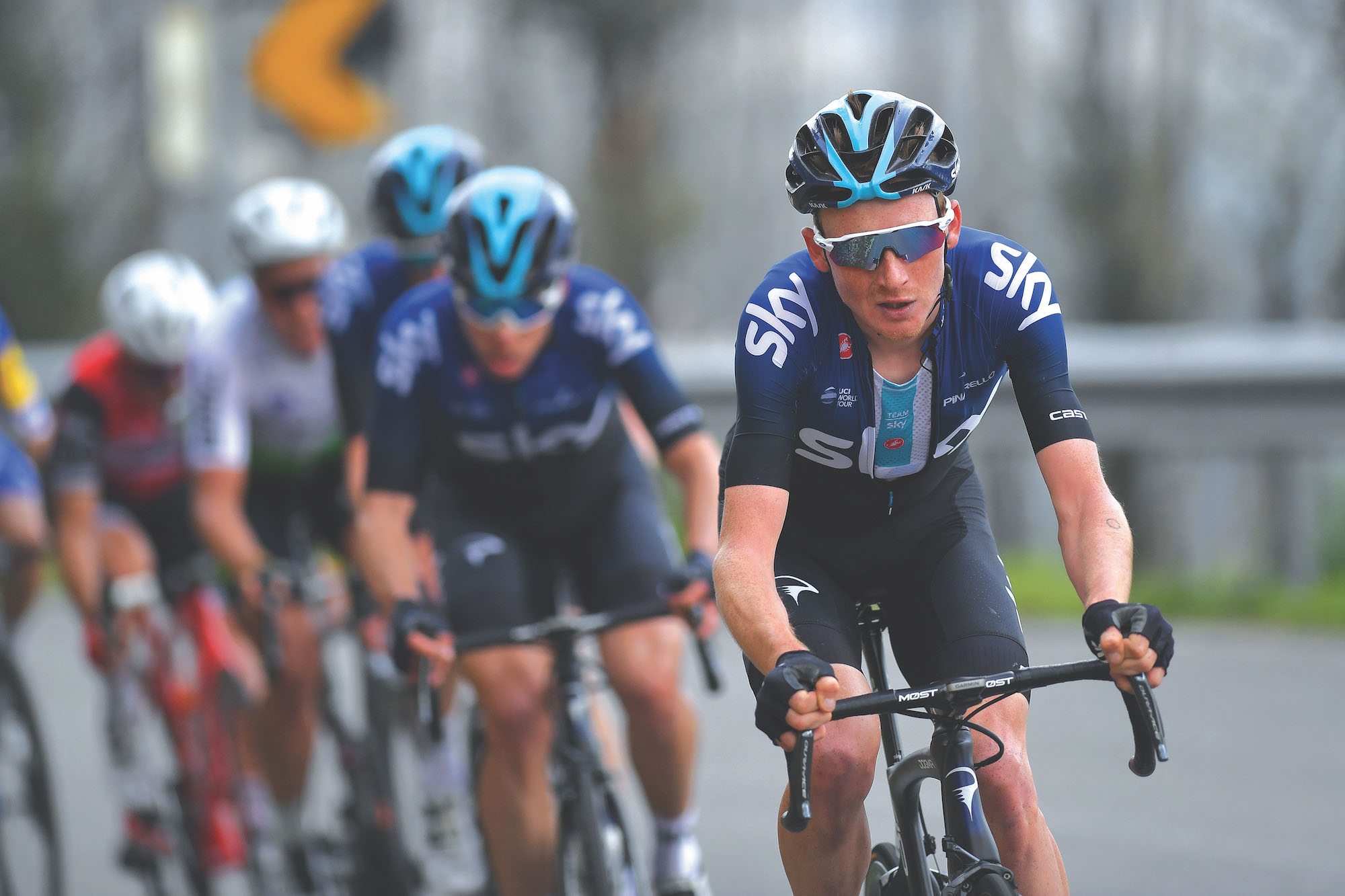'The biggest skill any rider can have is to feel something and not be told by a screen': Tao Geoghegan Hart - a week in training
In 2019 CW was allowed a glimpse inside a week of training with the now Giro d'Italia winning Tao Geoghegan Hart


Want to know how the best riders in the world train? For each article in this long-running MY WEEK IN TRAINING series from Cycling Weekly's print edition, we sit down with an elite rider who talks us through a recent week of training in granular detail. This time it's the turn of Ineos-Grenadiers's Tao Geoghegan Hart...
Tao Geoghegan Hart rode to a career-defining at the Giro d'Italia in 2020, showing the form of his career as he won two stages and delivered Team Ineos's most successful Grand Tour ever.
Having stepped up to ride with the British WorldTour team in 2017, Cycling Weekly caught up with him in April 2019 to get a glimpse into the Londoner's training as he spent time with his team-mates on a training camp in Tenerife.
At the start of that year Geoghegan Hart was flying, winning two stages of the Tour of the Alps and finishing second overall on general classification behind his Team Ineos team-mate Pavel Sivakov. His wins in Italy were his first as a professional, having moved to Team Sky following three years riding for Axel Merckx’s development teams, a conveyor belt of immense talent.
When CW spoke to him from Tenerife, Geoghegan Hart was building up to his Giro d’Italia debut, his second career Grand Tour. At the time he said: “I’ve been building up to the Giro since November and this was my last big block of training,” he said. “I want to be really consistent for three weeks.”

Week in training
The latest race content, interviews, features, reviews and expert buying guides, direct to your inbox!
The week: April 8-14, 2019
Location: Tenerife, Spain
Preparing for: Giro d’Italia
Age: 25 (as of 30/03/2020)
Height: 6ft
Weight: 61kg
Hometown: Hackney, London
Rides for: Team Ineos
Should amateurs go on training camps?
No. I’m very against this trend. I grew up as a junior training in London and Essex, one of the flattest places in the world, and I still managed to get to where I am. You don’t need special equipment or a training camp. I used to do Regent’s Park laps — in the centre of London, pan-flat and involves dodging traffic. If you can teach yourself to train on something like that, then camps like I do as a pro are easy.
Biggest advice to amateurs?
I never had the best bike and never had a power meter until I joined Axel Merckx’s team. I trained with Matt Winston and we used RPE — rate of perceived exertion. We did a lot of short track efforts, a lot of stuff built on leg speed and explosive power. Listen to your body, and don’t look at your numbers. The biggest skill any rider can have is to feel something and not be told by a screen. It’s a massive skill that not everyone has got but it goes a long way.
What’s the biggest mistake you’ve made?
Overtraining. All pros do it — even the biggest names — and it gives you really bad fatigue. No one is immune, and I did it twice in 2018. I first overtrained after the Critérium du Dauphiné. I should have relaxed, watched the football World Cup and I would have been in better shape. Again, before the Vuelta a España, I didn’t hold back enough and trained too much before the race. In the first week, I was good but then I didn’t feel myself.
Your most beneficial training session?
The thing I like doing most, and I do it in a lot of different ways, is to find a mediocre climb — a standard British climb, if you will — and ride it at below threshold. I find it brings me on the most. It’s sweetspot riding; those efforts where there isn’t huge stress put on the body but you get a lot from it. I tweak it and add some pace variation in, too. Riding long sections of flat as if you were racing a time trial in that same zone is also good.
Monday
Long endurance ride - 6hr
This was a steady six-hour day with the five of us — me, Chris Froome, Woet Poels, Pavel Sivakov and Salvatore Puccio — all doing 15-20 minute turns on the front. It was a super-easy day of really low endurance. It was about getting the hours in and working on building an engine for the goal ahead. It felt like a recovery day and we had a cafe stop halfway through.

Tuesday
Long climb efforts - 5hr 24mins
We did a 100-minute climb — the focus of the day — and in total 3,800m of climbing. It was harder than the previous day and we did a few short efforts that worked towards higher end energy systems. But it was still a fairly general day, five hours in total, littered with sprints here and there.
Wednesday
Recovery ride - 1hr
This was a super-easy day where we just enjoyed an hour spinning the legs. We had a long coffee stop after 40 minutes. We still did 560m of climbing, but it wasn’t a hard day. We got back and had a massage. You have to learn to love these days during a training block, and make sure you don’t ride too hard.
Thursday
Long hard efforts - 5hr 24mins
This day consisted of five efforts over a five-hour ride. The first one was about activating the legs and then two consecutive efforts with a lot of pace variation working towards maximal effort. They were both 30-minute efforts on climbs. We then did an easier effort of 30 minutes, focusing on riding at low cadence. During the last effort, we climbed to the top of the volcano in a nine-kilometre team effort and gradually increased the pace. These days go past really quickly.
Friday
Long endurance ride - 6hr
Thursday had been a really hard day, and we knew Saturday would be just as tough, so this day was a really steady six hours in the saddle. Most amateurs would be very surprised how slow we rode. We descended all the way to sea level, did a few laps down there, and did a climb out of Masca. It’s four kilometres long and really hard — and took a long time at our slow speed. Cars were burning their clutches, doing hill starts; rental cars were getting stuck.
Saturday
Long ride with long efforts - 6hr
This was one of the hardest days of the week: a six-hour ride with efforts. The first of four efforts was 12 minutes, going through each zone. Then we did a 32-minute effort with a lot of pace variation on a long climb, then a 10-minute effort close to maximal output on a really steep climb. We finished with a 16km team effort up to high altitude, practising what we do in races.
Sunday
Rest day - 1hr
We did exactly the same as Wednesday. My average power was 118 watts — that’s how easy it was. The rest of the day we went to a spa, which was something different and meant we weren’t on our feet. We watched Paris-Roubaix together, and Liverpool v Chelsea in the Premier League. It’s important to enjoy rest days, making sure your eyes are on the next block and that you’re getting the most from every day you’re riding.
Train slow, race fast
Rarely has a Week in Training so brilliantly illustrated the importance pro riders place on periodised training. Geoghegan Hart’s hard days may be very hard indeed, but the same goes for his easy recovery rides. He understands that, for fitness gains to take hold, the body must be given the chance to adapt and repair.
The numbers: 24hr 45min total riding, 185min Z3+ effort
A freelance sports journalist and podcaster, you'll mostly find Chris's byline attached to news scoops, profile interviews and long reads across a variety of different publications. He has been writing regularly for Cycling Weekly since 2013. In 2024 he released a seven-part podcast documentary, Ghost in the Machine, about motor doping in cycling.
Previously a ski, hiking and cycling guide in the Canadian Rockies and Spanish Pyrenees, he almost certainly holds the record for the most number of interviews conducted from snowy mountains. He lives in Valencia, Spain.
